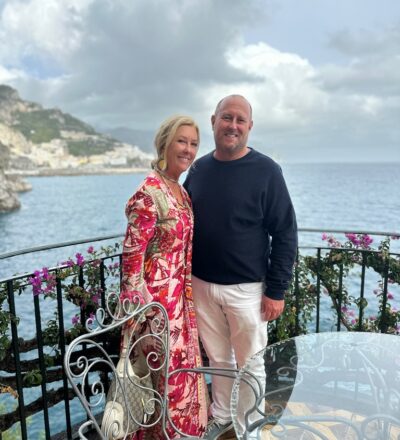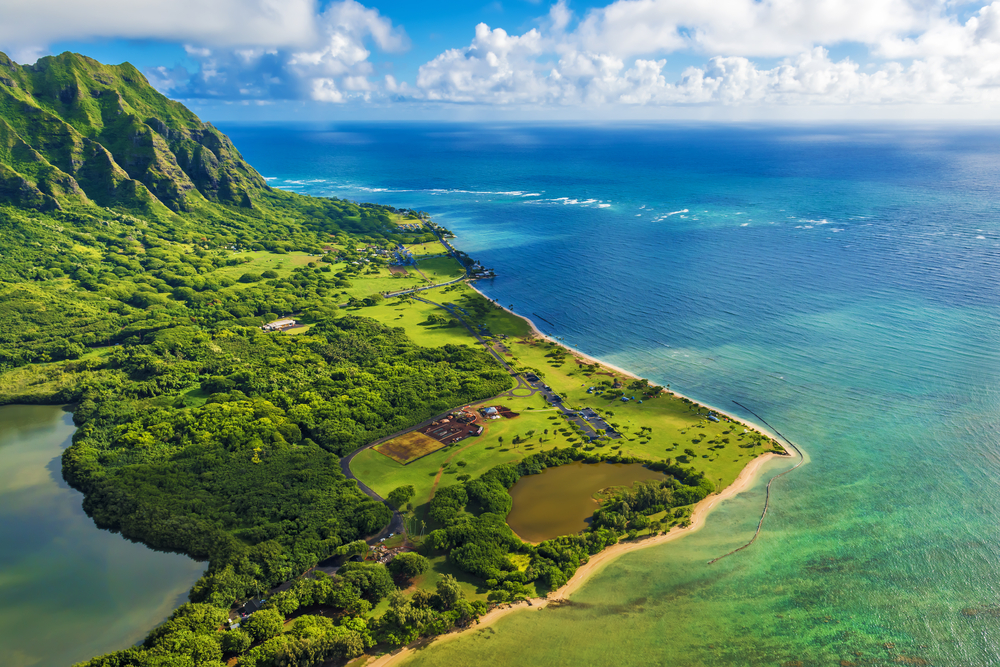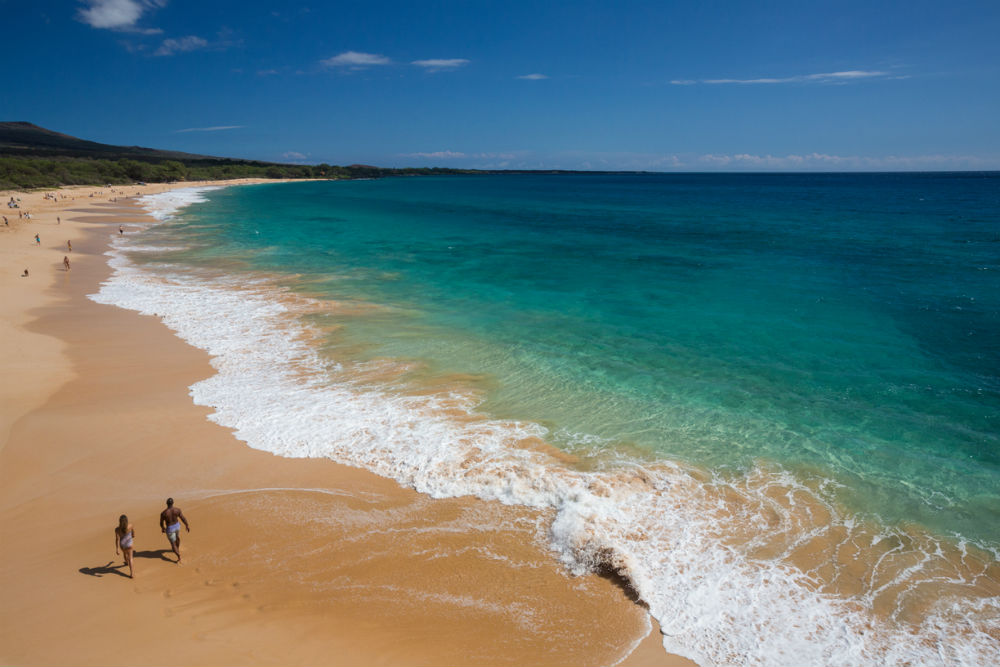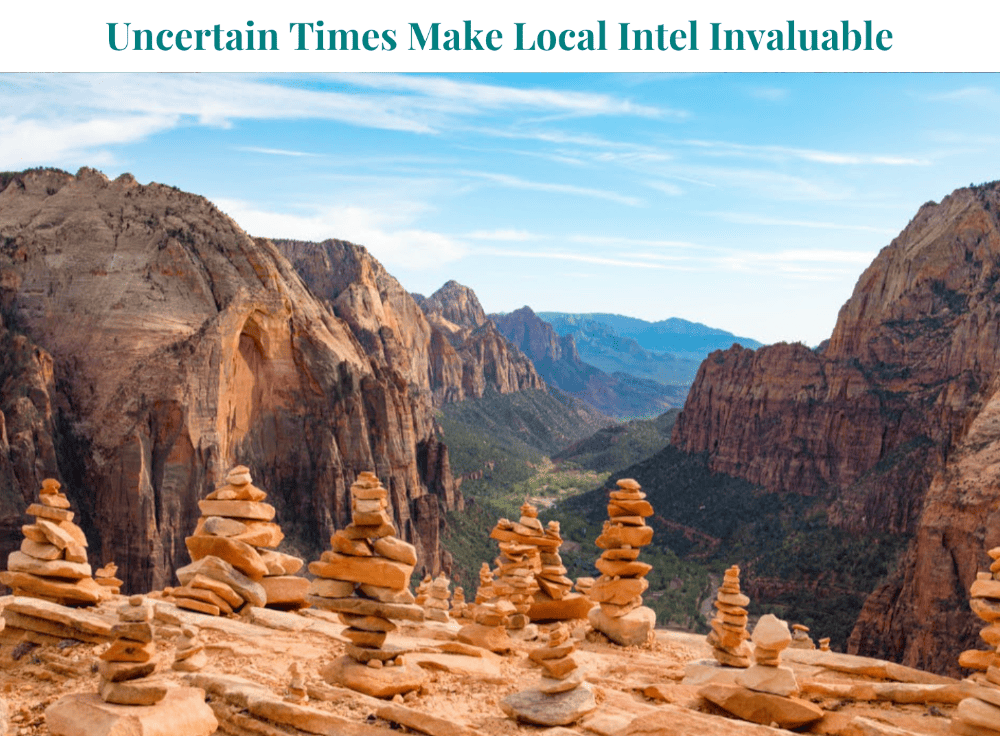Big Island, Hawaii: Insider’s Guide
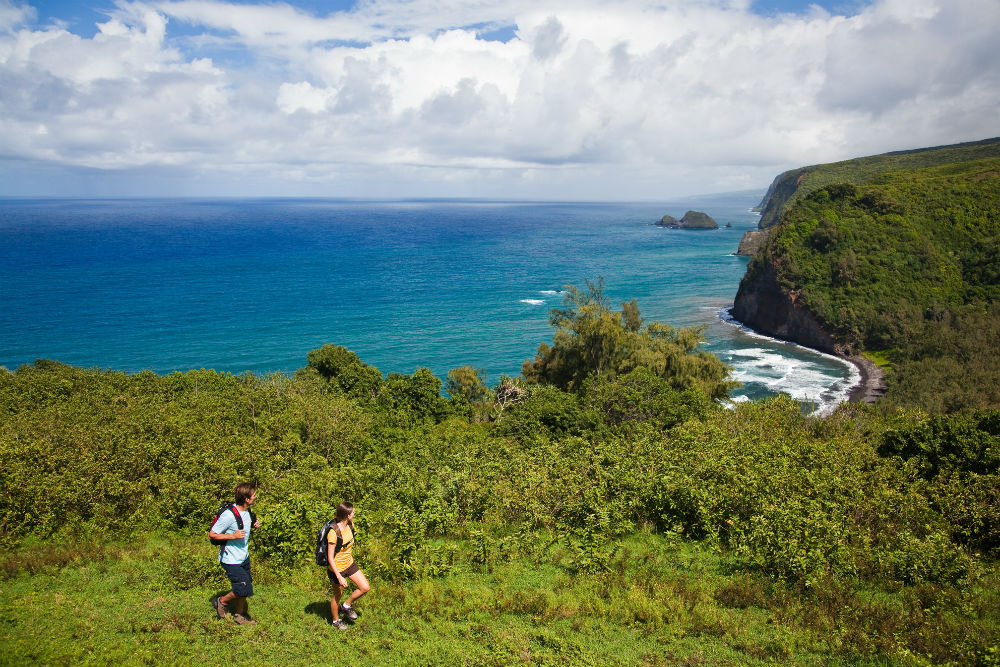 Hike with a beautiful view in North Kohala. Photo: Hawaii Tourism Authority (HTA) / Tor Johnson
Hike with a beautiful view in North Kohala. Photo: Hawaii Tourism Authority (HTA) / Tor Johnson
The insider advice on this page is from two of Wendy’s Trusted Travel Experts for Hawaii, Jay and Dani Johnson of Coastline Travel.
Jay and Dani spend six weeks a year in Hawaii, escorting groups of Silicon Valley execs as well as vacationing with their two daughters. Their agency sends so many travelers to Hawaii that it has significant clout with the five-star resorts—which translates into perks for their travelers—but they also book rental homes when that’s the smarter choice for the group. They can arrange anything from multi-generational family reunions to pull-out-all-the-stops honeymoons, from kite-boarding lessons on Maui to private guided hikes on Kauai, the Big Island, and Oahu’s North Shore. Living in Los Angeles and with offices throughout California, they can also orchestrate out-of-the-box itineraries in their own backyard. They can arrange for Los Angeles Angels tickets right behind home plate, V.I.P. access to Disneyland, a cooking lesson with the head chef at Napa’s Michelin-starred Meadowood resort, glamping among the redwoods—or all of the above in one quick, efficient trip.
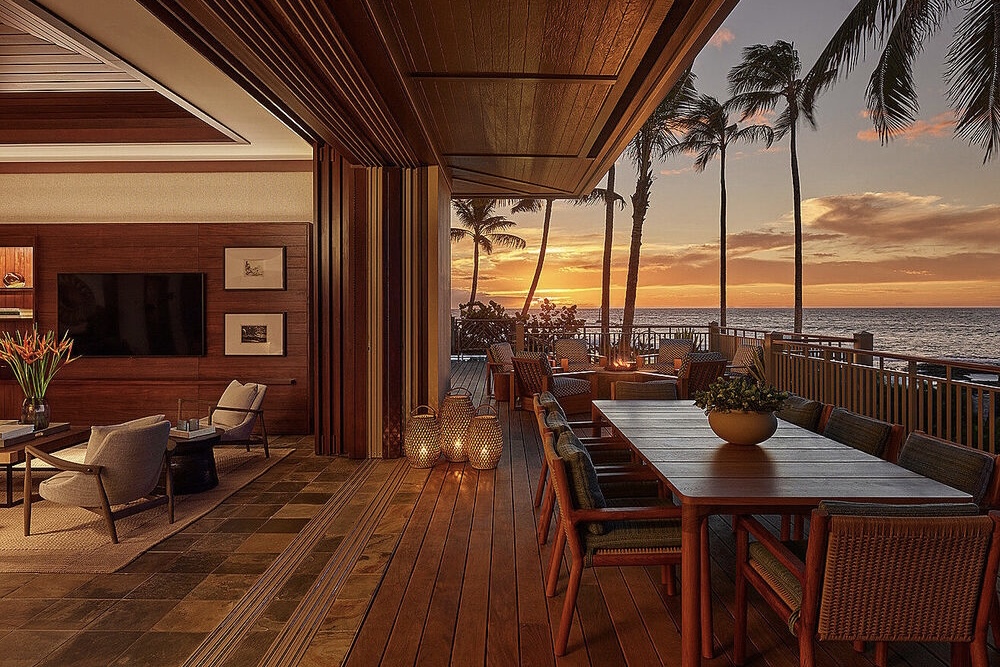
Take advantage of indoor/outdoor living at the Four Season Resort Hualalai. Photo: Four Season Resort Hualalai
Where to Stay and Eat
Best-value splurge hotel
The oceanfront Four Seasons Hualalai is divided into four neighborhoods, each with its own swimming pool. There are seven pools in all, plus a golf course, tennis, pickleball, sports club, spa, and oceanfront dining. You take one of the property’s two boats out for a day of adventure: You can snorkel, or use a Subwing to “fly” underwater, ride a tube above the water, go deep-sea fishing, and visit beaches with limited land accessibility.
Best bang-for-your-buck hotels
The Mauna Lani Hotel recently underwent a $250 million renovation; the result feels luxurious while maintaining a deep respect for the environment and Hawaiian culture. Given the many activities available, it’s an excellent value for families: You can snorkel right from the beach, ride an outrigger canoe, play paddle tennis or golf, or charter the Mauna Lani boat for a special outing. The daily Turtle Talk is also not to be missed!
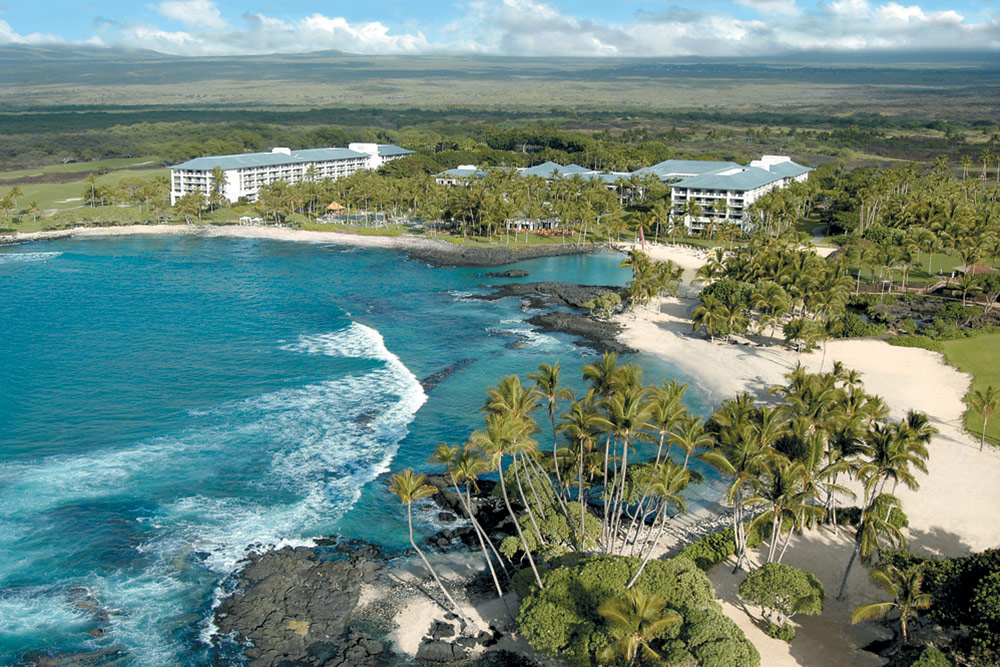
The Fairmont Orchid has rooms and activities well suited for families. Photo: Fairmont
For families, the Fairmont Orchid also offers great value and an impressive beach location. The hotel has many connecting rooms and large suites with separate master bedrooms that can comfortably accommodate five people, as well as a Gold floor that offers food all day long with full breakfast, snacks, and quite a nice spread in the evening. There’s also a children’s program, a huge pool, and plenty of space for little ones to run around. But what kids love most are the resident sea turtles that live in the lagoon right near the beach. Book a Garden View or Oceanfront Room, depending on how important a view is to you; guests often find that the partial views are more obscured than they anticipated.
Restaurants the locals love
Kohala Burger & Taco does not disappoint. In Hilo, where most locals live, Jay and Dani recommend the Moon & Turtle.
Dishes to try
Well, this is Kona, so you have to try the coffee, and it’s Hawaii, so you have to try shave ice. But you can’t leave the state without trying poke—a raw fish salad, usually made with ahi or yellowtail. Nearly every eatery has its own version. Da Poke Shack in Kailua-Kona is a good place to dive in: They make eight varieties, including one with avocado aioli and another with spicy garlic sesame oil.
Meals worth the splurge
Canoe House at the Mauna Lani, Ulu Ocean Grill at the Four Seasons Hualalai, and Paniolo Night at Rosewood Kona Village are all top choices for fine dining—and priced accordingly. During peak season space is reserved for hotel guests, so it can be difficult to get a reservation if you aren’t staying at the property.
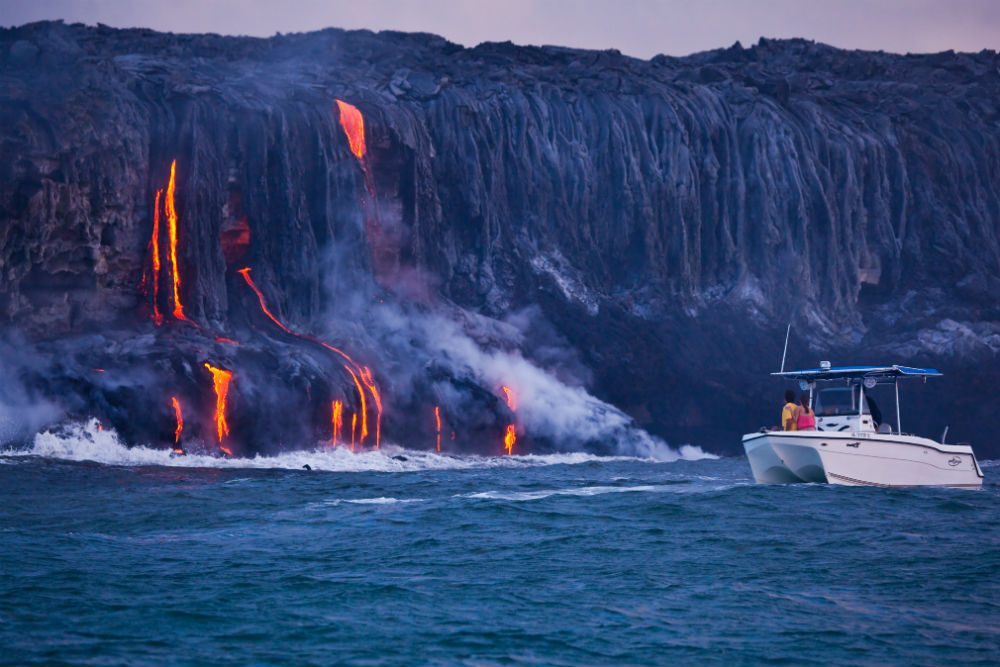
Lava viewing is a must on the Big Island. Photo: Hawaii Tourism Authority (HTA) / Tor Johnson
What to See and Do
Don’t miss
A helicopter tour of the Volcanoes National Park: Fly over stunning craters while learning exactly how the youngest of the Hawaiian Islands is still forming. But don’t just see the volcanoes from above. Spend some time on foot in the park itself first, then hop on the helicopter either on the coast or in Hilo.
Snorkeling with the manta rays. You can go out by boat or from the beach. Manta rays have no teeth, so fear not!
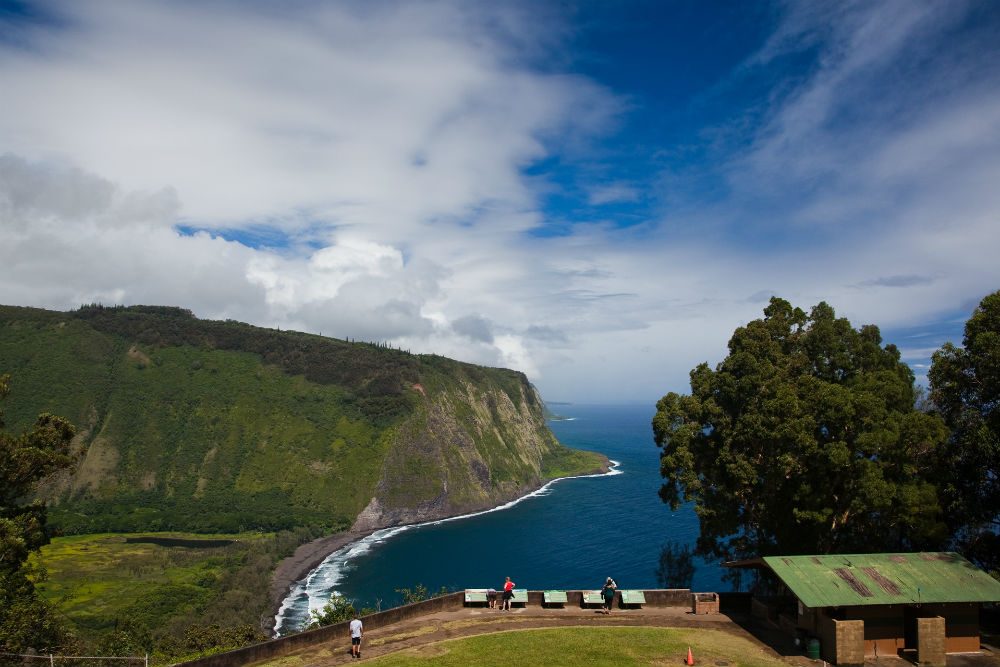
The Waipio Valley lookout. Photo: Hawaii Tourism Authority (HTA) / Tor Johnson
Don’t bother
Hilo may be the island’s capital, but it’s still a small town, and you don’t need more than a day or two there to explore the volcano. Also keep in mind that Hilo is one of the rainiest cities in the U.S. If you’re there in March or April, though, don’t miss the Merrie Monarch Festival.
Hidden gem
The hike to Pololu Valley. If you can make it to the bench at the top of the hill, you’ll be rewarded with both a sense of accomplishment and a great Instagram shot! This hike is beautiful and imbued with history—Hawaiians would carry rocks from the valley to use in building their homes.
Best beaches
The half-mile, white-sand Hapuna Beach—the one often seen in advertisements and TV shows touting an island paradise—is one of the Big Island’s most beautiful and easily accessible beaches.
For another perfect white-sand strand—but this one without the crowds—try Makalawena Beach near Kekaha Kai Sate Park, in Kona. You’ll have to maneuver an unpaved road for a short distance and walk a bit from the parking area, but that’s part of the charm.
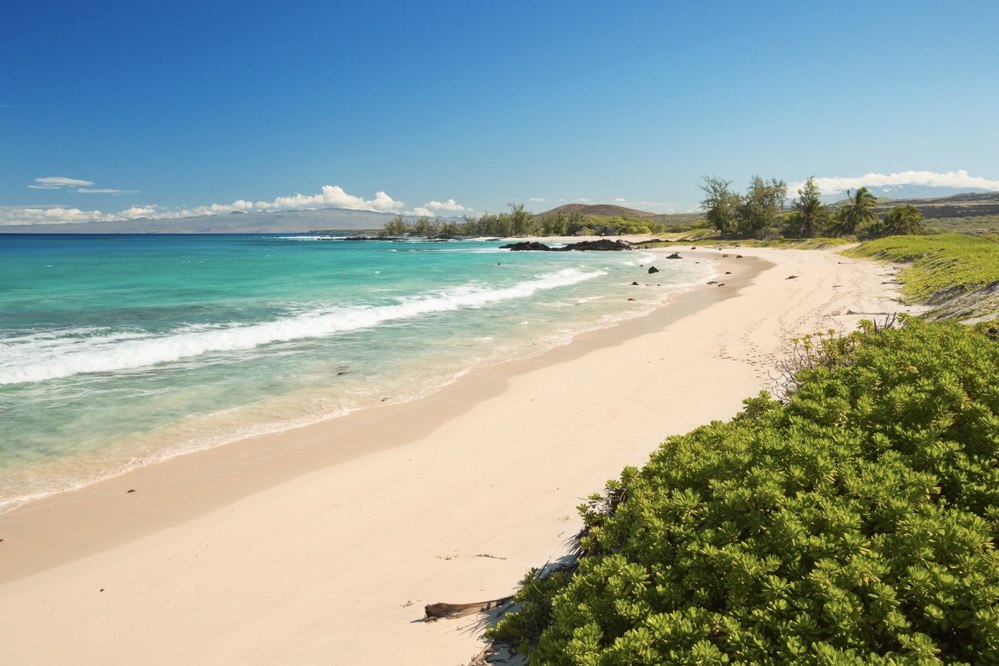
Access to crowd-free Makalawena Beach is via an unpaved road and a walking trail. Photo: Shutterstock
Best for snorkeling
Kealakekua Bay (also known as Kay Bay), on the western edge of the island, is a spectacular marine sanctuary; since the snorkeling site can only be reached by boat, the coral is pristine, and there are plenty of colorful fish.
Best for thrill-seekers
Take a helicopter to a remote valley, go for a hike, then picnic in a secluded spot. Getting off the beaten path by foot is very difficult on the Big Island nowadays, as much of the land is privately owned.
How to spend a lazy Sunday
The history of this area has a lot to do with churches and missionaries, and some of that history lives on today. The Mokuaikaua Church in Kona, the first Christian church to be built in these islands, dates back to 1836. It’s constructed of lava rock and local woods and still holds services on Sundays.
Cheap thrill
A visit to the Hawaiian temple of King Kamehameha, Pu’ukohola Heiau, where you can learn how the Hawaiians lived in the 1700s and see where the mighty monarch hid from his enemies—mostly the other island chiefs who feared that he’d take over their islands (they were right!). The heiau is now a National Historic Site and staffed by very knowledgeable park rangers; be sure to listen to one of their free talks about the historical significance of this special place.
Best Times to Go
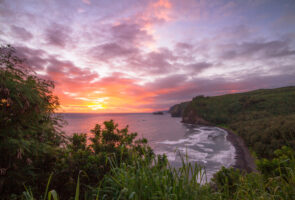
There are only two seasons on the Big Island: Summer, from May to October, is dry and temperate, with daytime temperatures hovering around 85 degrees. In so-called winter, temperatures drop around six degrees and rains are more common, especially in the eastern parts of the island around Hilo. May, September, and October are the choicest months for the Big Island, as the weather is driest and the crowds are thin.
Worst Times to Go
Summer and Christmas are the most crowded and expensive times to visit.
Biggest Rookie Mistake
Not spending enough time in Volcanoes National Park, home to two of the world’s most active volcanoes. Many people try to make it a day trip. But if you’re staying on the Big Island’s west coast (the sunny coast where all the resorts are), you’ll be trekking two hours each way (more if you stop at the worthwhile sights en route), and you won’t have time for all of the park’s great hiking trails.
Word of Warning
Beware of buying Kona coffee that is not Kona coffee. Kona coffee can only be grown in specified districts on the island. It’s best to buy these beans in Kona-Kailua. It’s also possible to visit a local coffee plantation and buy your coffee directly from there.
Airport Intel
Most visitors fly into Kona International Airport (KOA) at Keahole, on the island’s west coast and just 15 to 30 minutes to many of the island’s popular beach hotels. The baggage handlers are quick to remove luggage from the belt, so look for any checked bags on the floor of the baggage-claim area.
The Souvenirs
You can buy authentic Kona coffee along with a lot of other yummy island products—such as macadamia nuts in all different forms, cookies, orchids, koa wood products, and local handmade jewelry—at Hamakua Macadamia Nut Company and have them shipped home.
Local artworks and handicrafts can be found at farmers’ markets and flea markets in Kona and Hilo. Another good place for local artist wares is in the town of Hawi. There are about four blocks lined with artsy shops and galleries where local artists sell their jewelry, koa woodcarvings, ceramics, and other crafts.
Instagram Moment
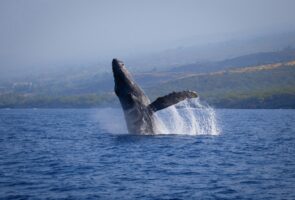
During whale season, in winter, these mesmerizing creatures swim so close to the beach on the Kohala Coast in Kona that you can almost touch them.

